We may receive a commission when you use our affiliate links. However, this does not impact our recommendations.
For many years I’ve lined the jaws of all my vises with sueded leather to improve their grip. Whenever I mention that I do this, I get a barrage of questions:
- Where do you buy suede? (Really? Any craft store, fabric store, Tandy etc.)
- What glue do you use? (Any glue. Hide, yellow glue, epoxy, contact cement etc.)
- How do you apply the leather? (Like veneer. Clamp a caul on the leather and let the glue cure).
Despite those above instructions, many woodworkers hesitate. And so I offer this simpler solution: adhesive-backed cork contact paper, which you can buy at any decent kitchen store. I bought mine at The Container Store.
After getting a tip from some chairmakers, I’ve began experimenting with using cork floor tiles, wall tiles and other bits of cork in the shop. I wasn’t happy with the floor tiles or wall tiles because most were really thick, and it was difficult to find ones that were self-stick.
So I’ve settled on cork contact paper, usually used to line shelves or drawer bottoms in kitchens. The cork is about 1/16” thick and has a paper back that covers the adhesive. Cut the cork to size with a shop knife, remove the backing and stick it in place. That’s it.
The contact paper is also nice because the paper backing has a cutting grid on the back (sort of like wrapping paper), which makes it easy to get precise and square cuts.
The cost? It was $10 for a roll that was 18” x 48”.
I lined the chops of my leg vises with the stuff and even put it on the underside of the doe’s foot I use instead of a tail vise. It grips just as well as leather. I think I’m going to line the bottom of my tool chest’s sliding trays with the leftovers.
(Oh, one more detail because I know it will come up: It’s OK to put the cork (or leather) on the front edge of the benchtop. No, it does not affect edge-jointing. You’ll just have to trust me on this one.)
— Christopher Schwarz
For more workbench advice, check out my newly revised “Workbenches: From Design and Theory to Construction & Use,” available at ShopWoodworking.com.
Here are some supplies and tools we find essential in our everyday work around the shop. We may receive a commission from sales referred by our links; however, we have carefully selected these products for their usefulness and quality.



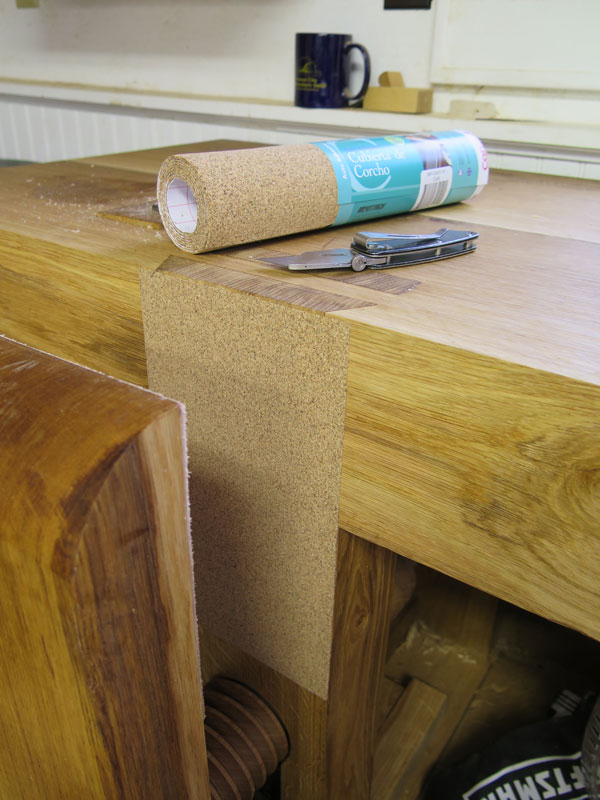
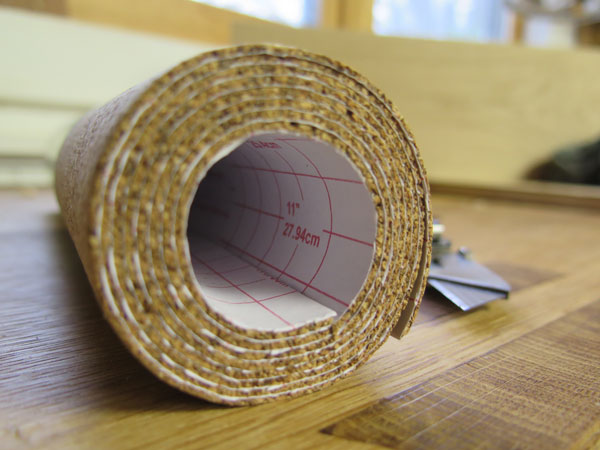
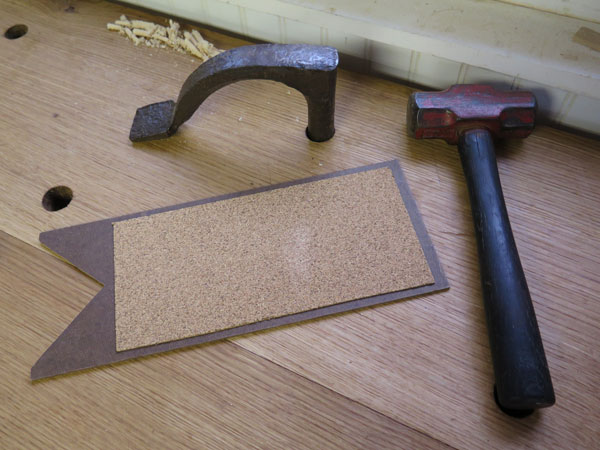
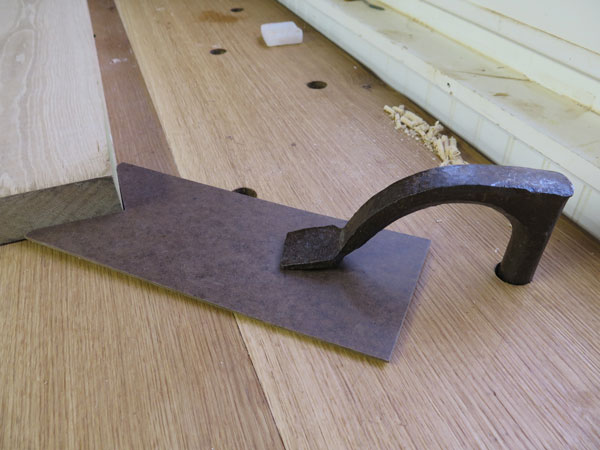





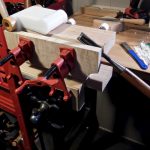
So how about lining handscrew jaws with this stuff?
I remember hearing about about an order of nuns that did their own woodworking. A frugal order, they use portions of their wornout tunics when making new workbenches to line their workholding devices for better grip. In a curious reversal of the outside world, what were once habits are now vises.
I haven’t heard from No-Slip Tape users. Shy? It is a space age product found at your Home Store. Self sticks well and doesn’t delaminate or chip. It wears best of all. Think of all those footsteps. Not wide enough? They add up side by side. There is 6 inch wide tape for a bundle, but you don’t need it.
Jennie
About 35 years ago I got a really good deal on some leather that was very thin ( maybe 1/16″ ). So naturally I went crazy and lined every drawer in my shop, except a couple tool drawers that were already lined with cork, and too full to mess with. As of “today” the drawers lined with leather look like they were just lined yesterday ( sort of speak). Where the drawers that were lined with cork ( which I’m embarrased to admit never got re-lined with leather, which I still have the leather cut and set aside to do so, setting in the bottom of the drawers, [they were in the sides]) are not doing as well. The cork is kind of falling apart with lots of pieces of cork missing, kind of like tools have been tumbled over and over against it, it’s just kind of crumbling with bits of cork on the tools when you pull them out ( kind of annoying, but not annoying enough to change it out ). I’ve changed the leather on my woodworking vises several times, however I’ve only been that energetic on my drawers once. Now I not only lined the bottom, but also the sides of the drawers ( see what I mean ), however it doesn’t seem to make any difference with the cork, where both the bottom and sides look in very poor condition, like it’s just getting old. Where the leather is still in great shape, and looks like it’s going at least another 35 years, or will eventually out last me. I used contact cement to attach them, so they both are sticking very well, and the cork is maybe only a couple years older than the leather. So in the very long run I vote leather, as the cork lined drawers get used less than a lot of the leather lined drawers. But since I have other projects to get done, maybe I’ll give the cork another 35 years, and see if it’s still there, and keep the experiment going…ya, that’s a good idea, I’ll get back to ya then (if I’m still here, [and remember]).
Cork is a awesome liner for tool trays/boxes! Very pointy edge friendly.
I’ve never used adhesive backed stuff, though. I have been using gasket sheets, which are about a fat 1/8″ thick without any adhesive attached.
Coffee mug looks familiar…
The cork on the backside of a doe’s foot works GREAT. We did a bunch of those from the masonite/MDF/mystery-paper-product stuff and backed some with cork and some with no-slip safety tape (the stuff for stair treads). Both worked very well.
Another option is No-Slip Tape used for safety on the edge of concrete steps. The glue backing hold up well as does the rubbery pimpledee surface. It also holds well to metal clamp faces.
Jennie
Has the supply of Megan’s suede skirts been exhausted?
Go to eBay and look up The Leather Guy. He can hook you up with just about any leather you desire and a whole lot cheaper than Tandy too. I bought a piece of 10 oz suede big enough for both of my bench vises with some leftover for about one tenth the cost of Tandy. Gotta love the internet.
I’ve used both old leather belts and “kitchen cork” on my pipe clamps for years. Durability on both seem to be about the same as long as I’m clamping ‘straight’ and on a flat surface. Trying to grab an edge or rough material does take a toll on the cork, (Oh, and it doesn’t do the leather any good either) but a quick scrape, cut and apply is a bit easier than the leather which takes a bit to set.
How have you found the cork to be in terms of durability vs. leather?